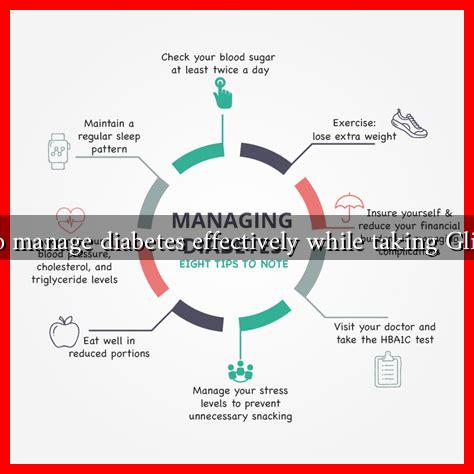-
Table of Contents
How to Manage Diabetes Effectively While Taking Glipizide
Diabetes management is a multifaceted approach that requires careful consideration of medication, diet, exercise, and lifestyle choices. Glipizide, a sulfonylurea medication, is commonly prescribed to help control blood sugar levels in individuals with type 2 diabetes. This article will explore effective strategies for managing diabetes while taking Glipizide, ensuring optimal health outcomes.
Understanding Glipizide
Glipizide works by stimulating the pancreas to release more insulin, which helps lower blood sugar levels. It is typically prescribed when diet and exercise alone are insufficient to control blood glucose. However, managing diabetes effectively while on Glipizide requires a comprehensive approach.
Key Strategies for Effective Diabetes Management
- Monitor Blood Sugar Levels: Regular monitoring of blood glucose levels is crucial. Patients should check their blood sugar levels multiple times a day, especially before meals and at bedtime. This helps in understanding how food, exercise, and medication affect blood sugar.
- Adopt a Balanced Diet: A well-balanced diet is essential for managing diabetes. Focus on:
- Whole grains, fruits, and vegetables
- Lean proteins such as chicken, fish, and legumes
- Healthy fats from sources like avocados and nuts
- Limiting processed foods, sugars, and saturated fats
- Stay Hydrated: Drinking plenty of water helps maintain hydration and can aid in blood sugar control. Aim for at least 8-10 glasses of water daily.
- Exercise Regularly: Physical activity plays a vital role in managing diabetes. Aim for at least 150 minutes of moderate aerobic activity each week, such as walking, swimming, or cycling. Incorporating strength training exercises at least twice a week can also be beneficial.
- Adhere to Medication Regimen: Taking Glipizide as prescribed is crucial. Patients should not skip doses and should consult their healthcare provider if they experience side effects or have concerns about their medication.
- Educate Yourself: Understanding diabetes and its management is empowering. Resources such as the American Diabetes Association (ADA) provide valuable information on living with diabetes.
Recognizing and Managing Side Effects
While Glipizide is effective, it can cause side effects, including hypoglycemia (low blood sugar), weight gain, and gastrointestinal issues. Recognizing the signs of hypoglycemia—such as sweating, shaking, confusion, and irritability—is essential. Patients should carry a source of fast-acting sugar, like glucose tablets or juice, to address low blood sugar quickly.
Case Study: Effective Management with Glipizide
Consider the case of John, a 58-year-old man diagnosed with type 2 diabetes. After starting Glipizide, he monitored his blood sugar levels diligently and adjusted his diet to include more whole foods while reducing processed sugars. He also committed to a regular exercise routine, walking 30 minutes daily. Over six months, John successfully lowered his A1C levels from 8.5% to 6.9%, demonstrating the effectiveness of a comprehensive management plan.
Conclusion
Managing diabetes effectively while taking Glipizide involves a holistic approach that includes regular monitoring, a balanced diet, consistent exercise, and adherence to medication. By understanding the medication’s role and implementing lifestyle changes, individuals can achieve better blood sugar control and overall health. Remember, it is essential to work closely with healthcare providers to tailor a management plan that suits individual needs. For more information on diabetes management, visit the American Diabetes Association.


